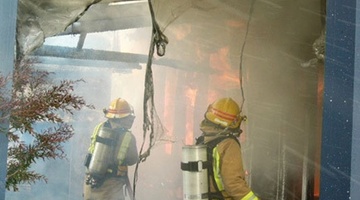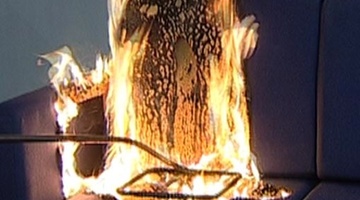In this video clip, Associate Professor Charley Fleischmann from the University of Canterbury describes the work being done to slow down fire in furniture. This gives people time to get away from the fire.
Points of interest
- What is better fire performance?
- How are scientists slowing down fire?
- What are chemical fire retardants? How do they work?
Transcript
ASSOCIATE PROFESSOR CHARLEY FLEISCHMANN
A benefit of our research has been getting a better understanding of how we might improve the fire performance of furniture. In terms of fire performance, better performance is burning slower, reducing the amount of energy that’s released and slowing down the release of toxic products.
From a fire point of view, we… you know, it’s not practical to assume that there will not be fires in a building. Over the life of a building, we can expect there to be a number of accidental ignitions. It’s a matter of having those ignitions be of little consequence, and one way to do that is to reduce the severity of the particular fire.
In the case of furniture, if we can slow the fire down, give people more time to get out and the Fire Service more time to get there and control the fire, there’s a number of ways that we can do that. We can put in a layer, or what we call an interliner, which is another fabric often made out of materials like Kevlar and other things. That’s the same fabric that they often use for firefighters, and that material is very hard to ignite and to get it to burn.
If we can keep the foam from igniting, then we've essentially won the game. If the foam doesn't ignite, we don't get the rapid fire progression, and the fire is much, much slower and much easier for somebody to control.
A chemical fire retardant – and there’s a whole host of them – it’s normally a chemical additive, and what happens is those chemicals, when the foam is heated, they come off and they interfere chemically with the reactions. When the fuel meets with the oxygen, it gives off the heat and light and produces carbon dioxide and water vapour. If I add a chemical fire retardant into it, when we burn the furniture, you get off not only these simple fuels, but you get off these chemical additives that get in the way. They interfere with the chemical reaction and so they slow everything down. Now these work very well to resist the fire early on, to reduce the ability of the item to become ignited, but once the fire becomes very large, their impact is very small.
Natural fibres perform very well in fire for a number of reasons. Typically, a natural material, a fibre, will char when it burns, and that’s just like wood. It’s the carbon that is difficult to burn. You can burn it but it’s harder to burn. Like wool – when that burns, it leaves behind a charred remain. That charred remain acts as a shield over the foam and slows down the burning. It gives a barrier between the foam and the ignition source and so the foam doesn’t get ignited or if it does, its participation is slowed down.
Acknowledgements:
New Zealand Fire Service
Paul Martini



